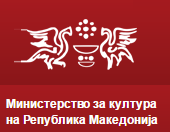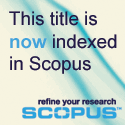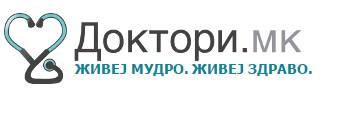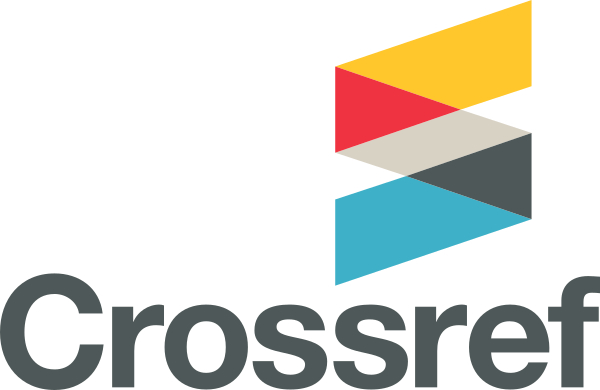JSER Policies
JSER Online
JSER Data
Frequency: quarterly
ISSN: 1409-6099 (Print)
ISSN: 1857-663X (Online)
Authors Info
- Read: 25177
Definition of Open Access
Open-access (OA) literature is digital, online, free of charge, and free of most copyright and licensing restrictions.
- OA removes price barriers (subscriptions, licensing fees, pay-per-view fees) and permission barriers (most copyright and licensing restrictions). The PLoS shorthand definition —"free availability and unrestricted use"— succinctly captures both elements.
- There is some flexibility about which permission barriers to remove. For example, some OA providers permit commercial re-use and some do not. Some permit derivative works and some do not. But all of the major public definitions of OA agree that merely removing price barriers, or limiting permissible uses to "fair use" ("fair dealing" in the UK), is not enough.
- Here's how the Budapest Open Access Initiative put it: "There are many degrees and kinds of wider and easier access to this literature. By 'open access' to this literature, we mean its free availability on the public internet, permitting any users to read, download, copy, distribute, print, search, or link to the full texts of these articles, crawl them for indexing, pass them as data to software, or use them for any other lawful purpose, without financial, legal, or technical barriers other than those inseparable from gaining access to the internet itself. The only constraint on reproduction and distribution, and the only role for copyright in this domain, should be to give authors control over the integrity of their work and the right to be properly acknowledged and cited."
- Here's how the Bethesda and Berlin statements put it: For a work to be OA, the copyright holder must consent in advance to let users "copy, use, distribute, transmit and display the work publicly and to make and distribute derivative works, in any digital medium for any responsible purpose, subject to proper attribution of authorship...."
- The Budapest (February 2002), Bethesda (June 2003), and Berlin (October 2003) definitions of "open access" are the most central and influential for the OA movement. Sometimes I refer to them collectively, or to their common ground, as the BBB definition.
- When we need to refer unambiguously to sub-species of OA, we can borrow terminology from the kindred movement for free and open-source software. Gratis OA removes price barriers alone, and libre OA removes price barriers and at least some permission barriers as well. Gratis OA is free of charge, but not free of copyright of licensing restrictions. Users must either limit themselves to fair use or seek permission to exceed it. Libre OA is free of charge and expressly permits uses beyond fair use. To adapt Richard Stallman's famous formulation (originally applied to software), gratis OA is free as in 'free beer', while libre OA is also free as in 'free speech'.
- In addition to removing access barriers, OA should be immediate, rather than delayed, and should apply to full texts, not just abstracts or summaries.
OA is compatible with copyright, peer review, revenue (even profit), print, preservation, prestige, quality, career-advancement, indexing, and other features and supportive services associated with conventional scholarly literature.
- The primary difference is that the bills are not paid by readers and hence do not function as access barriers.
The legal basis of OA is the consent of the copyright holder (for newer literature) or the expiration of copyright (for older literature).
- Because OA uses copyright-holder consent or the expiration of copyright, it does not require the reform, abolition, or infringement of copyright law.
- One easy, effective, and increasingly common way for copyright holders to manifest their consent to OA is to use one of the Creative Commons licenses. Many other open-content licenses will also work. Copyright holders could also compose their own licenses or permission statements and attach them to their works (though there are good reasons not to do so without legal advice).
- When copyright holders consent to OA, what are they consenting to? Usually they consent in advance to the unrestricted reading, downloading, copying, sharing, storing, printing, searching, linking, and crawling of the full-text of the work. Most authors choose to retain the right to block the distribution of mangled or misattributed copies. Some choose to block commercial re-use of the work. Essentially, these conditions block plagiarism, misrepresentation, and sometimes commercial re-use, and authorize all the uses required by legitimate scholarship, including those required by the technologies that facilitate online scholarly research.
- For works not in the public domain, OA depends on copyright-holder consent. Two related conclusions follow: (1) OA is not Napster for science. It's about lawful sharing, not sharing in disregard of law. (2) OA to copyrighted works is voluntary, even if it is sometimes a condition of a voluntary contract, such as an employment or funding contract. There is no vigilante OA, no infringing, expropriating, or piratical OA.
- Of course OA can be implemented badly so that it infringes copyright. But so can ordinary publishing. With a little care it can be implemented well so that doesn't infringe copyright. Just like ordinary publishing.
OA is compatible with peer review, and all the major OA initiatives for scientific and scholarly literature insist on its importance.
- Peer review does not depend on the price or medium of a journal. Nor does the value, rigor, or integrity of peer review.
- One reason we know that peer review at OA journals can be as rigorous and honest as peer review in conventional journals is that it can use the same procedures, the same standards, and even the same people (editors and referees) as conventional journals.
- Conventional publishers sometimes object that one common funding model for OA journals (charging fees to authors of accepted articles or their sponsors) compromises peer review. I've answered this objection at length elsewhere.
- OA journals can use traditional forms of peer review or they can use innovative new forms that take advantage of the new medium and the interactive network joining scholars to one another. However, removing access barriers and reforming peer review are independent projects. OA is compatible with every kind of peer review and doesn't presuppose any particular model.
- The reverse is not true, however. Some emerging models of peer review presuppose OA, for example models of "open review" in which submitted manuscripts are made OA (before or after some in-house review) and then reviewed by the research community. Open review requires OA but OA does not require open review.
- In most disciplines and most fields the editors and referees who perform peer review donate their labor, just like the authors. Where they are paid, OA to the resulting articles is still possible; it merely requires a larger subsidy than otherwise.
- Despite the fact that those exercising editorial judgment usually donate their labor, performing peer review still has costs --distributing files to referees, monitoring who has what, tracking progress, nagging dawdlers, collecting comments and sharing them with the right people, facilitating communication, distinguishing versions, collecting data, and so on. Increasingly these non-editorial tasks are being automated by software, including free and open-source software.
There are two primary vehicles for delivering OA to research articles, OA journals ("gold OA") and OA repositories ("green OA").
Open access is not synonymous with universal access.
-
Even after OA has been achieved, at least four kinds of access barrier might remain in place:
- Filtering and censorship barriers. Many schools, employers, and governments want to limit what you can see.
- Language barriers. Most online literature is in English, or just one language, and machine translation is very weak.
- Handicap access barriers. Most web sites are not yet as accessible to handicapped users as they should be.
- Connectivity barriers. The digital divide keeps billions of people, including millions of serious scholars, offline.
- Even if we want to remove these four additional barriers (and most of us do), there's no reason to hold off using the term "open access" until we've succeeded. Removing price and permission barriers is a significant plateau worth recognizing with a special name.
OA is a kind of access, not a kind of business model, license, or content.
-
OA is not a kind of business model.
- There are many business models compatible with OA, i.e many ways to pay the bills so that readers can reach the content without charge. Models that work well in some fields and nations may not work as well in others. No one claims that one size fits all.
- There are many differences among the disciplines that affect the funding of OA. We should not expect OA to make progress in all disciplines at the same rate, any more than we should expect it to make progress in all countries at the same rate. Most of the progress and debate is taking place in the STM fields (science, technology, and medicine), but OA is just as feasible and useful in the humanities.
- New OA business models are evolving, and older ones are being tested and revised, all the time. There's a lot of room for creativity in finding ways to pay the costs of a peer-reviewed OA journal or a general-purpose OA repository, and we're far from having exhausted our cleverness and imagination.
- OA is not a kind of license. There are many licenses compatible with OA, i.e. many ways to remove permission barriers for users and let them know what they may and may not do with the content. See the sections on permission barriers and licenses above.
- OA is not a kind of content. Every kind of digital content can be OA, from texts and data to software, audio, video, and multi-media. The OA movement focuses on peer-reviewed research articles and their preprints. While most of these are just text, a growing number integrate text with images, data, and executable code. OA can also apply to non-scholarly content, like music, movies, and novels, even if these are not the focus of most OA activists.
OA serves the interests of many groups.
- Authors: OA gives them a worldwide audience larger than that of any subscription-based journal, no matter how prestigious or popular, and demonstrably increases the visibility and impact of their work.
- Readers: OA gives them barrier-free access to the literature they need for their research, unconstrained by the budgets of the libraries where they may have access privileges. OA increases reader reach and retrieval power. OA also gives barrier-free access to the software they use in their research. Free online literature is free online data for software that facilitates full-text searching, indexing, mining, summarizing, translating, querying, linking, recommending, alerting, "mash-ups" and other forms of processing and analysis.
- Teachers and students: OA puts rich and poor on an equal footing for these key resources and eliminates the need for payments or permissions to reproduce and distribute content.
- Libraries: OA solves the pricing crisis for scholarly journals. It also solves what I've called the permission crisis. OA also serves library interests in other, indirect ways. Librarians want to help users find the information they need, regardless of the budget-enforced limits on the library's own collection. Academic librarians want to help faculty increase their audience and impact, and help the university raise its research profile.
- Universities: OA increases the visibility of their faculty and research, reduces their expenses for journals, and advances their mission to share knowledge.
- Journals and publishers: OA makes their articles more visible, discoverable, retrievable, and useful. If a journal is OA, then it can use this superior visibility to attract submissions and advertising, not to mention readers and citations. If a subscription-based journal provides OA to some of its content (e.g. selected articles in each issue, all back issues after a certain period, etc.), then it can use its increased visibility to attract all the same benefits plus subscriptions. If a journal permits OA through postprint archiving, then it has an edge in attracting authors over journals that do not permit postprint archiving. Of course subscription-based journals and their publishers have countervailing interests as well and often resist or oppose OA. But it oversimplifies the situation to think that all their interests pull against OA.
- Funding agencies: OA increases the return on their investment in research, making the results of the funded research more widely available, more discoverable, more retrievable, and more useful. When funding agencies disburse public funds, OA helps in a second way as well, by providing fundamental fairness to taxpayers or public access to the results of publicly-funded research.
- Governments: As funders of research, governments benefit from OA in all the ways that funding agencies do (see previous entry). OA also promotes democracy by sharing non-classified government information as widely as possible.
- Citizens: OA gives them access to peer-reviewed research, most of which is unavailable in public libraries, and gives them access to the research for which they have already paid through their taxes. But even those with no interest in reading this literature for themselves will benefit indirectly because researchers will benefit directly. OA accelerates not only research but the translation of research into new medicines, useful technologies, solved problems, and informed decisions that benefit everyone.
Share Us
Journal metrics
-
 SNIP 0.059
SNIP 0.059 -
 IPP 0.07
IPP 0.07 -
 SJR 0.13
SJR 0.13 -
 h5-index 7
h5-index 7 -
 Google-based impact factor: 0.68
Google-based impact factor: 0.68
10 Most Read Articles
- PARENTAL ACCEPTANCE / REJECTION AND EMOTIONAL INTELLIGENCE AMONG ADOLESCENTS WITH AND WITHOUT DELINQUENT BEHAVIOR
- RELATIONSHIP BETWEEN LIFE BUILDING SKILLS AND SOCIAL ADJUSTMENT OF STUDENTS WITH HEARING IMPAIRMENT: IMPLICATIONS FOR COUNSELING
- EXPERIENCES FROM THE EDUCATIONAL SYSTEM – NARRATIVES OF PARENTS WITH CHILDREN WITH DISABILITIES IN CROATIA
- INOVATIONS IN THERAPY OF AUTISM
- AUTISM AND TUBEROUS SCLEROSIS
- THE DURATION AND PHASES OF QUALITATIVE RESEARCH
- REHABILITATION OF PERSONS WITH CEREBRAL PALSY
- DISORDERED ATTENTION AS NEUROPSYCHOLOGICAL COGNITIVE DISFUNCTION
- HYPERACTIVE CHILD`S DISTURBED ATTENTION AS THE MOST COMMON CAUSE FOR LIGHT FORMS OF MENTAL DEFICIENCY
- DIAGNOSTIC AND TREATMENT OPTIONS IN AUTISTIC SPECTRUM DISORDERS – AN OVERVIEW
















